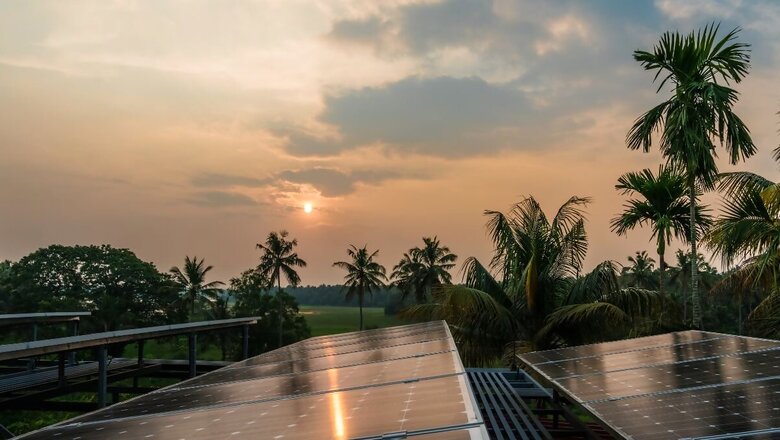Energy Transition: Renewables Surge to 71% in India's All-New Power Capacity Additions in FY 2023-24

views
Renewable energy (RE) sources contributed to 71 per cent of the total 26 GW of all new power generation capacity that India added in the financial year ending March 2024, signalling the long-term shift towards clean energy. India has committed to achieving 500 GW of non-fossil fuel capacity by 2030 as part of its climate action.
While RE clearly dominated with 71.3 per cent (18.5 GW) of the new additions, it was followed by coal/lignite at 22.1 per cent (5.7 GW) and 5.4 per cent nuclear (1.4 GW) capacity which was added for the first time since 2017, according to the CEEW Centre for Energy Finance (CEEW-CEF) Market Handbook released on Friday.
Of the total 18.5 GW of RE, solar (grid-scale and rooftop) continued to lead with 81.3 per cent (15 GW) of the new additions. The share of wind sources almost doubled and now stands at 17.6 per cent (3.3 GW), while that of small hydro and bio-power stood at 0.3 per cent and 0.8 per cent, respectively.
COAL’S SHARE IN OVERALL POWER MIX SLIPS BELOW 50%
With this, the country’s total installed energy capacity now stands at 442 GW, of which nearly 33 per cent (144 GW) is Renewable Energy (RE), while 11 per cent (47 GW) is from hydropower. The share of the polluting fossil fuel — coal/lignite — in India’s total installed capacity has also dropped below 50 per cent (217.6 GW) for the first time. It now accounts for 49.2 per cent of total installed capacity.
The clean energy push is in line with India’s long-term climate goal to achieve 500 GW of installed electricity capacity from non-fossil fuel (Renewable Energy and Nuclear) sources by 2030. Last April, the Ministry of New and Renewable Energy (MNRE) had also announced that it will invite bids for 50 GW of renewable energy capacity annually for the next five years till FY2027-28 to meet the goal.
“Nearly 95 per cent of India’s targeted 50 GW annual RE bidding trajectory was met in FY24. Bids of 47.5 GW that were issued are approximately three times the RE capacity that has been added annually in recent years,” said Gagan Sidhu, Director, CEEW-CEF.
Sidhu also pointed at India’s clear tilt away from ‘pure vanilla RE procurement’, with the wind-solar hybrids, firm and dispatchable renewable energy (FDRE), and RE-plus-storage accounting for 37 per cent of the capacity auctioned. However, he added, that the main challenge with RE will now be the scale of financing specifically to ramp up RE three times to finance bids of 47.5 GW that were issued.
“The year saw several policy moves to shift gears beyond utility-scale RE. For instance, PM Surya Ghar: Muft Bijli Yojana was introduced to increase rooftop solar installation in the residential segment, which could result in the addition of nearly 30 GW,” said Riddhi Mukherjee, Research Analyst, CEEW-CEF.
Meanwhile, the peak power demand (met) also continued to rise through the year, and reached a new high of 240 GW. The total electricity generation was up by 10.4 per cent in FY2024 compared to FY23. This was mainly due to the fast-growing economy and lower-than-expected rainfall in August and October last year, followed by a warmer-than-usual November-December, and then severe cold days during January in North India.
Find Lok Sabha Election 2024 Phase 3 Schedule, Key Candidates And Constituencies At News18 Website.


















Comments
0 comment